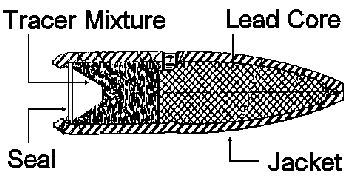
Above is the article that appeared in the Rossendale Free Press in September 1966, the 50th anniversary of the raid. The map below shows the area of the Zeppelin raid over Rossendale on the 25th of September 1916, with kind permission from Mr Peter J.C. Smith from his book entitled Zeppelins over Lancashire. (click on image to enlarge)
Zeppelin L21
LZ 61 was a German Navy airship and was allocated the tactical numbering of L21. Two months after the raids by Zeppelin L21 over Rossendale and other parts of Lancashire. The fate of this troublesome airship was sealed. L21 had covered 17 reconnaissance missions and 10 attacks on England which resulted in the dropping of 14,442kg of bombs, leaving death and destruction in both in the Midlands and in Lancashire. On the night of the 27/28th November 1916 the 29-year-old Commander of L21 Kurt Frankenberg who also commanded L21 in the September raid over Lancashire was returning from an extended raid involving nine other Zeppelins.
They had been active over Yorkshire, Cheshire and Staffordshire and Commander Frankenberg whilst steering by way of Peterborough was brought down eight miles east of Lowestoft by three defending aircraft, with the result she crashed into the sea with the loss of all 17 crew. The pilots involved in the attack were Flight Lieutenant Egbert Cadbury, Flight Sub Lieutenant Gerard William Reginald Fane and Flight Sub Lieutenant Edward Laston Pulling. The machine gunners aboard L21 were firing at Pulling during his attack and as he passed underneath Pulling began firing into the airship as he did so his Phosphorous rounds resulted in the stern of the Zeppelin being ignited. Fane noticed that she Fell into the sea stern first like a spent rocket. It was Pulling who was credited with the L21s destruction and he was awarded the DSO whilst Fane and Cadbury were given DSCs.
 Three manufacturers produced incendiary bullets but the ones made by Brock the fireworks manufacturer were the most successful, the bullet core held the incendiary material which was sealed with a base plug, 3 holes in the jacket of the bullet were sealed by a low melting point metal covered by the neck of the cartridge, when fired the heat of the passage of the bullet up the bore of the gun melted the plugs and the incendiary ignited on contact with air, only effective out to 200 yards.
Three manufacturers produced incendiary bullets but the ones made by Brock the fireworks manufacturer were the most successful, the bullet core held the incendiary material which was sealed with a base plug, 3 holes in the jacket of the bullet were sealed by a low melting point metal covered by the neck of the cartridge, when fired the heat of the passage of the bullet up the bore of the gun melted the plugs and the incendiary ignited on contact with air, only effective out to 200 yards.
 In March 1917 disaster was to strike for Flight Sub Lieutenant Pulling whilst flying the same BE2c aircraft that he attacked L21 with, whilst performing a loop the aircraft broke up in the air, killing himself and his passenger Flight sub Lieutenant J.C. Northrop, both are buried at Great Yarmouth Caister Cemetery. Below is a photograph of a BE2c of the type flown by Pulling
In March 1917 disaster was to strike for Flight Sub Lieutenant Pulling whilst flying the same BE2c aircraft that he attacked L21 with, whilst performing a loop the aircraft broke up in the air, killing himself and his passenger Flight sub Lieutenant J.C. Northrop, both are buried at Great Yarmouth Caister Cemetery. Below is a photograph of a BE2c of the type flown by Pulling .
.
The book entitled Zeppelins over Lancashire by Peter J.C. Smith gives a full and detailed account of the events that took place in Rossendale and other parts of the country during 1916 and 1918, and I would recommend to anyone interested in these events.
Continued on page two HERE
